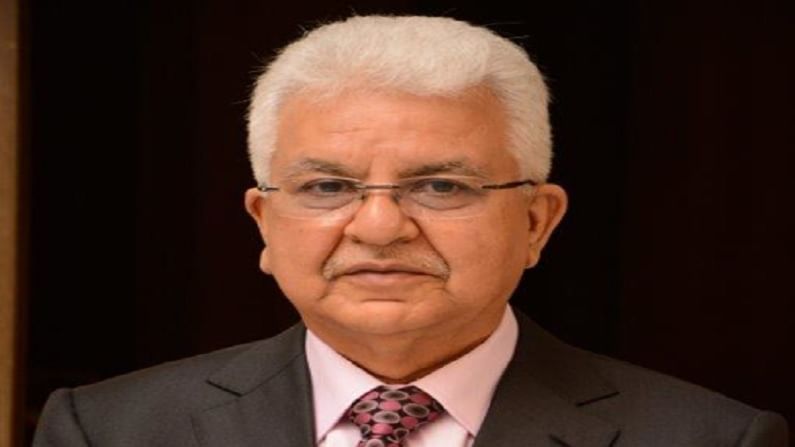Taking Indian economy to a higher growth trajectory
There is a need to continuously facilitate trade and industry and provide thrust to the growth promising sectors of Indian economy.

The journey of the Indian economy has been promising as the economic growth trajectory has increased from steady during the 1960s to 1990s to strong in 2000s and fastest in the 2010s. The advent of economic reforms has not only enhanced the socio- economic growth and development, but also provided a conducive and promising business environment. However, the year 2020 was marked as a difficult year for the Indian economy due to the daunting impact of the coronavirus-led economic crisis. The pandemic has resulted in severe disruptions in industrial production and growth by severely undermining the supply chains.
Nevertheless, the immediate containment measures and effective policies of the government, along with the calibrated measures by the RBI, and un-tiring efforts of the industry shifted the path of India’s economic growth trajectory to the growing side again. The economy witnessed the V-shaped recovery, which was evident at the half-way stage of 2020-21. This reflects the resilience and robustness of country’s economic fundamentals.
Aatmanirbhar Bharat
At this juncture, to further enhance the pace of economic growth and achieve the vision of $ 5 trillion economic size along with becoming Aatmanirbhar in the coming years, the continuation of bold government reforms are essential. Further, there is a need to continuously facilitate trade and industry and provide thrust to the growth promising sectors of Indian economy. In this regard, the following measures are suggested for taking Indian economy to a higher growth trajectory, going forward.
It is suggested to increase the manufacturing sector contribution to around 25% in GDP in next five years by 2026-27 as the sector plays a significant role in driving the growth and economic development. Here, improvement in the manufacturing competitiveness of domestic manufacturers and local products becomes a pre-requisite. So, the focus should be on further advancement in ease of doing business and reduction in the cost of doing business, including costs of capital, costs of compliances, costs of logistics, costs of land and availability of land and costs of labour. Also, there is a need to work towards reducing trade costs by providing highly effective and connected transport services, port facilities, communications, energy, financial services and business legislations. Manufacturing competitiveness would also be enhanced by rapid adoption of future technologies, Artificial Intelligence (AI), Blockchain, Robotics, Augmented and Virtual Reality (AR&VR), Internet of Things (IoT).
Focus on agriculture
The agriculture sector has proven its resilience in the Covid-19 pandemic. The sector is a low hanging fruit, which can give fruitful outcomes with the support of the government measures. To provide a boost to the agriculture sector, it is necessary to increase farmers’ income and reduce disguised unemployment. The wastages in the agricultural sector should be reduced from more than 30% to less than 10% in the next five years. Moreover, the exports of agri and food processing products should be increased to US$ 100 billion in the next three years from the current level of around $ 41 billion (2020-21).
In India, the services sector has witnessed a significant growth trajectory, backed by digital technologies and institutional mechanisms facilitated by the government. Going ahead, the services sector needs to focus on export of financial and professional services targeting the new markets instead of traditional advanced and emerging markets. This transformation would help raise overall value of exports and make economic growth more broad based.
In the recent years, there has been significant progress in liberalising FDI regime in country. However, there is ample scope to further simplify procedures, improve business environment, and expedite regulatory and other clearances at all levels to translate greater liberalisation into higher inflows.
Effective and rationalised taxation system not only raises the necessary funds for the government expenditure, but also contributes to income redistribution, economic stabilisation and growth. At this juncture, dual and concurrent levy of GST by the central and state government simultaneously should be made as national GST whereby the central government will levy GST and share the revenue with state governments for simplification, uniformity and ease of doing business.
Reforms across sectors
Rising economic growth entails for an efficient and facilitating power sector. This requires uniform power tariffs across the country and therefore, there should be One Nation, One Electricity Tariff norm in the country. At the Centre of all, the approach should be people-centric, aiming towards better accessibility and affordability. Further, the industrial tariffs should not be high enough in order to compensate subsidy in agriculture and domestic use.
The health infrastructure of the country has been brought into a sharp focus amid the pandemic, highlighting the critical position of the public health sector and the need for increased government spending on public health. Going ahead, India should strive to act as a role model in developing the Hospital infrastructure to avoid causalities during calamity like the Covid pandemic. Further, education and skill development are necessary to bring in structural transformation in the economic growth.
These reforms will go a long way for making the economic growth trajectory sustainable, with a growth rate of more than 10% and fulfill the vision of attaining an economic size of $ 5 trillion economy by 2026-27.
(The writer is president, PHDCCI. Views expressed are personal)